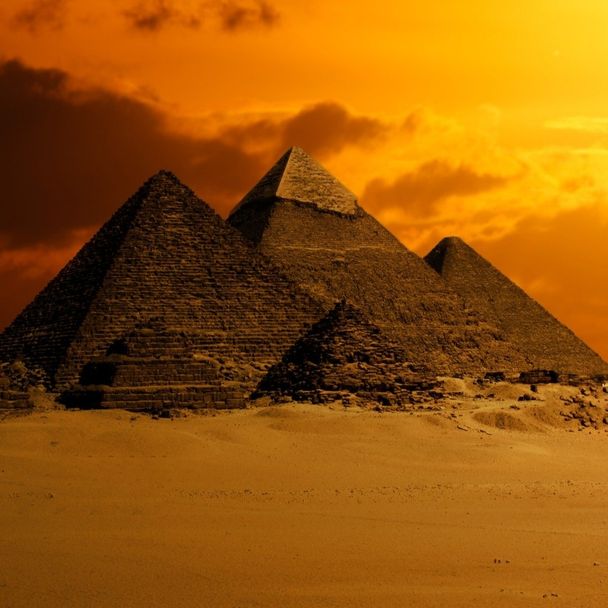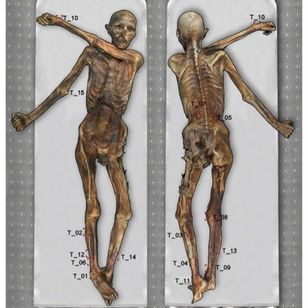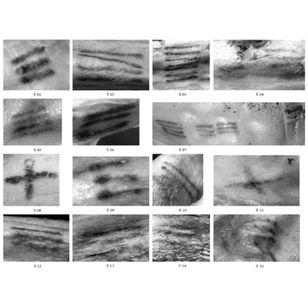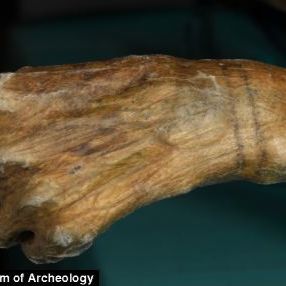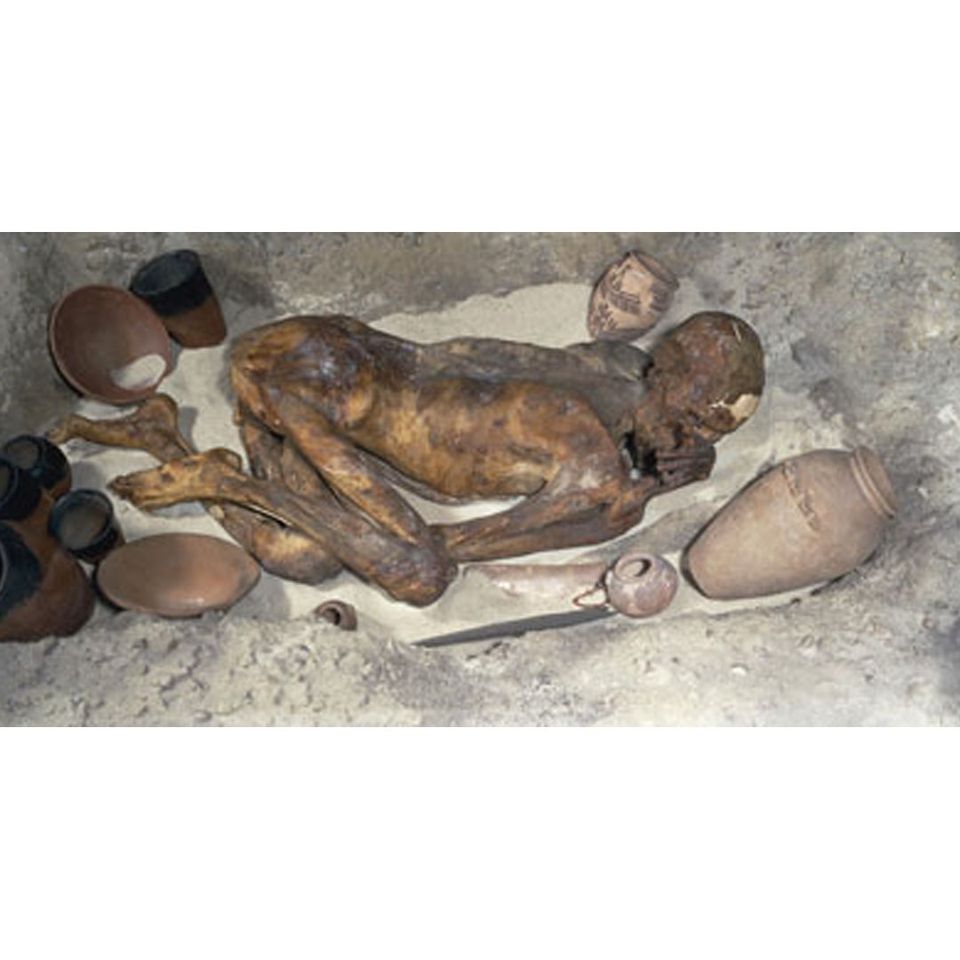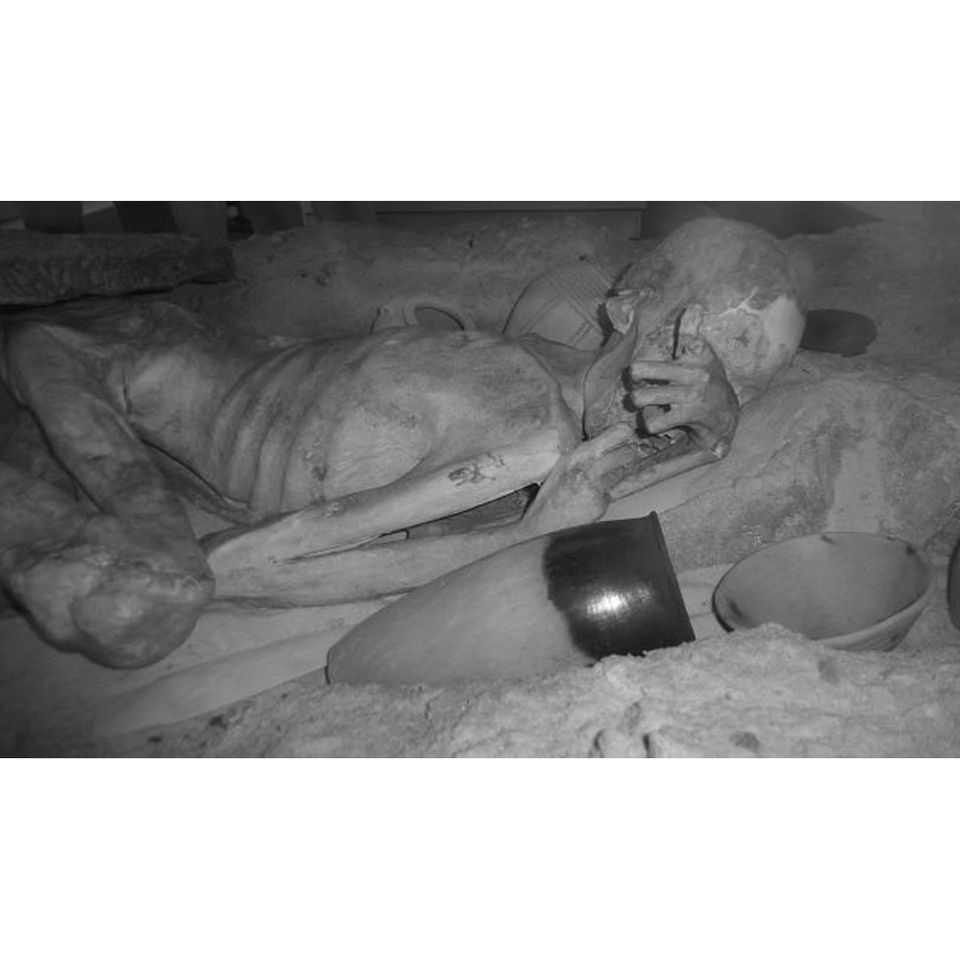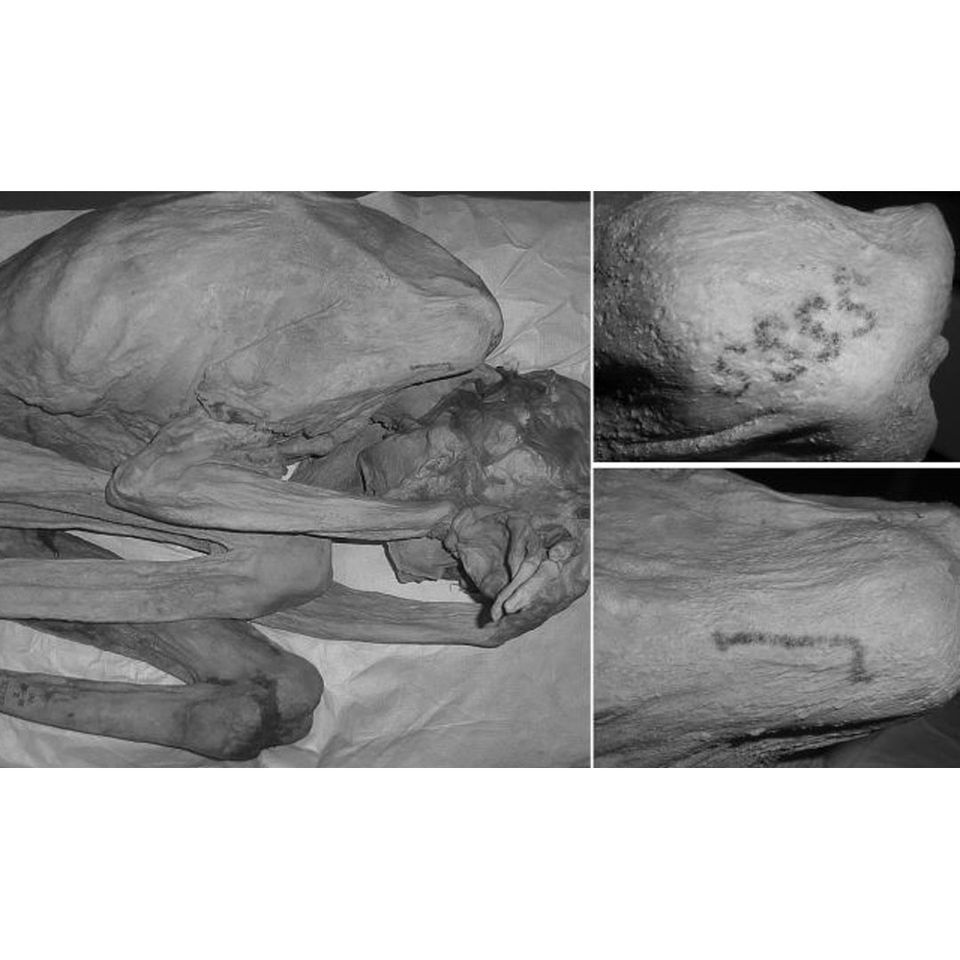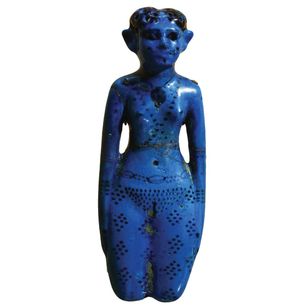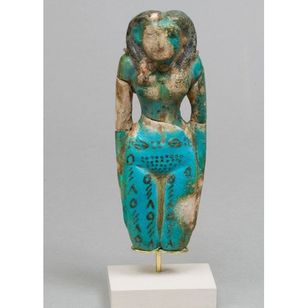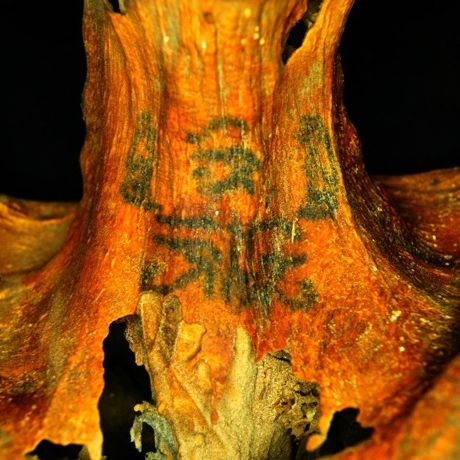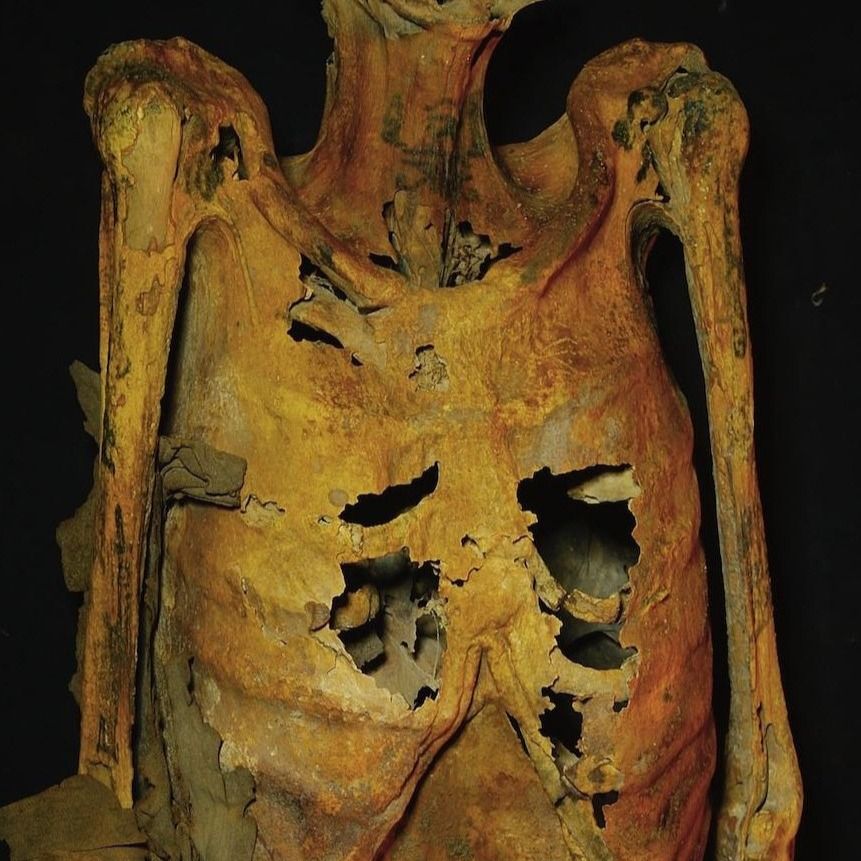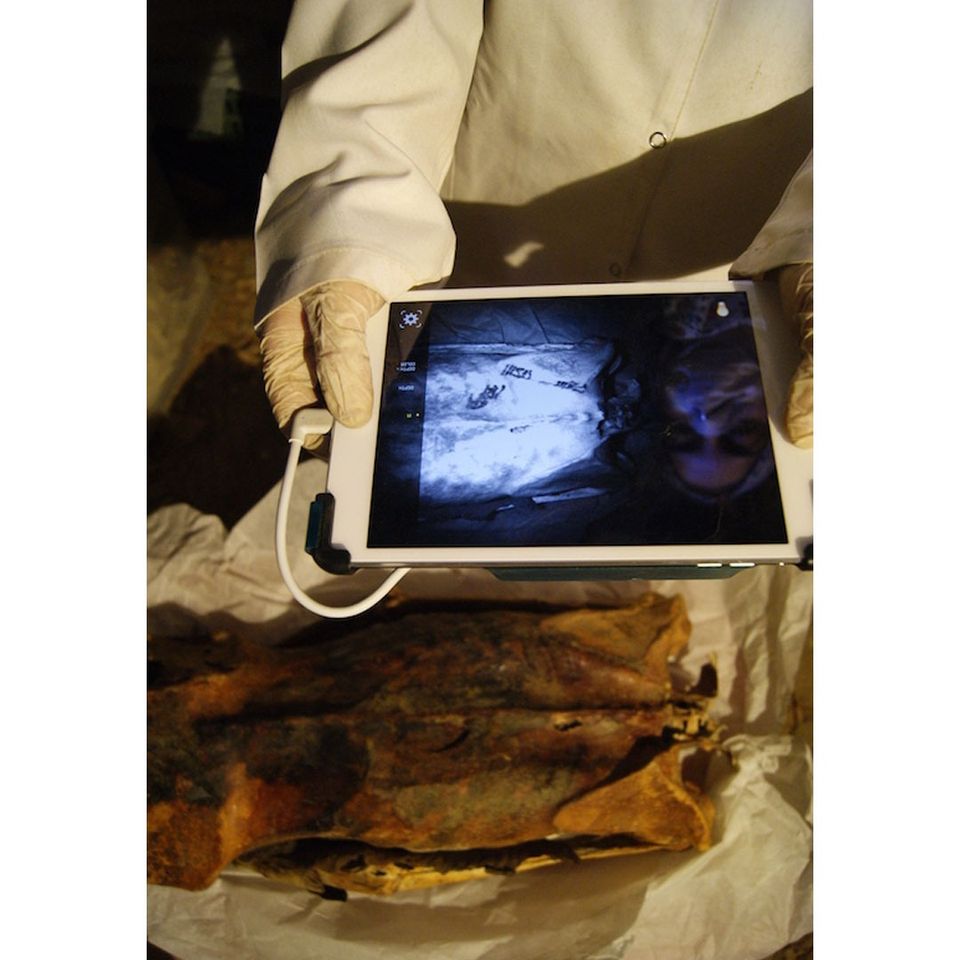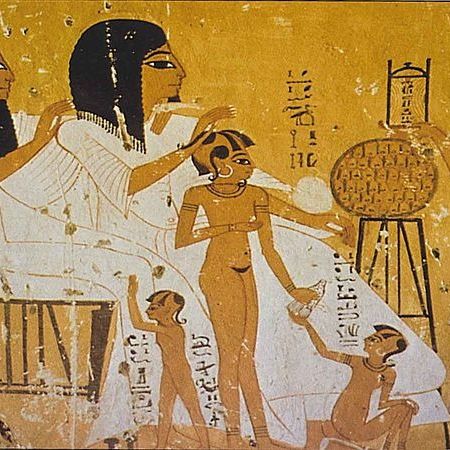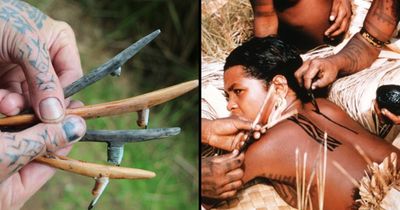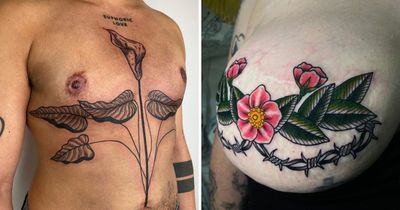A Brief History of Ancient Egyptian Tattoos
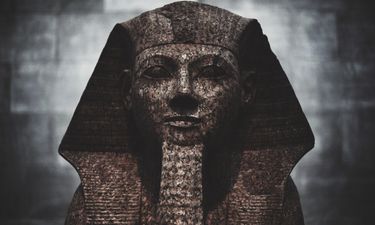
Ever wondered just how far back tattooing goes? Discover the history of tattooing in Ancient Egypt.
Everyone knows that tattoos have been around for thousands of years, but just how long exactly? Despite no written record, advancements in technology have enabled researchers to uncover irrefutable evidence of tattooing in Ancient Egypt! Here we take a look at how the early tattooing process may have worked and the potential meanings behind ink found on mummies dating back 5000 years!
Until quite recently, the earliest evidence of tattoos were those found on an Iceman known as Otzi. Discovered in the early 1990s, it is thought that Otzi was buried in a glacier around 3250 BC. His frozen remains were covered in simple tattoos of vertical and horizontal lines, with no obvious meaning. However, scientists have since uncovered evidence of tattooing around the same era in Ancient Egypt.
During the Predynastic era, the Egyptians hadn’t yet began the process of embalming bodies. Instead, corpses were naturally mummified by the sand in which they were buried. The heat and aridity of the desert dried out and preserved their skin as well as hair. Over time, however, this process discolours and darkens the skin, making spotting tattoos with the naked eye very difficult. Due to this, body art has only recently been discovered on two mummies housed by the British Museum since 1900, thanks to new technology.
Gebelein Man on display at the British Museum. Tattoos hiding in plain sight. (Credit: Copyright Trustees of the British Museum) #ancientegypt #historyoftattoos #figuraltattoos #Egypt #ancienttattoos #tattooculture #tattoohistory #egyptiantattoos
Using infrared imaging and radiocarbon dating, scientists have been able to identify tattoos on two Gebelein mummies dating back to somewhere between 3351 and 3017 BC. Described as “hiding in plain sight”, they are thought to be the earliest figural tattoos ever seen on human skin, representing images and figures. The male body features an image of a wild bull, known to represent male virility and status. He also appears to have an outline of a barbary sheep, which represents good hunting skills, as that animal was notoriously difficult to capture and kill. On the woman’s body there are several S-shaped symbols, which frequently appear on Ancient Egyptian pottery, but their meaning is harder to decipher.
An infrared image showing the tattoos on the male mummy known as Gebelein A (Credit: Copyright Trustees of the British Museum) #ancientegypt #ancienttattoos #tattoohistory #figuraltattoos #Egypt #ancienttattoos #tattooculture #tattoohistory #egyptiantatto
Tattoos have also been found on later mummies from the Middle Kingdom. Seven 3000 year old mummies found at Deir el-Medina, an ancient settlement used by the craftsmen who built the tombs in the Valley of the Kings, were tested after researchers noticed markings. Though body art was initially associated with dancing girls and prostitutes by male excavators, the elite location of these women’s burials and the meanings behind their ink suggests otherwise.
Infrared images of the Gebelein woman and her tattoos (Credit: Copyright Trustees of the British Museum) #ancientegypt #historyoftattoos #figuraltattoos #Egypt #ancienttattoos #tattooculture #tattoohistory #egyptiantattoos
One of the mummies, first discovered in 1891 by Eugene Grebaut, was identified as Amunet, a priestess of the goddess Hathor. The patterns of dots tattooed across her abdomen are linked to fertility and are thought to be symbols of protection; important for expectant mothers, as infant mortality was high and many women would have died during childbirth at the time.
Joann Fletcher of the University of York explained: “During pregnancy, this specific pattern would expand in a protective fashion in the same way bead nets were placed over wrapped mummies to protect them.” In essence, the beading acted as a symbolic barrier between life and death. This idea is supported by the fact that figurines from the same era known as “Brides of the Dead” frequently displayed the same kind of geometric patterns.
Ancient Egyptian artwork is highly symbolic and their faith in both religion and magic is apparent in their body art. While early tattoos were quite simplistic, later designs were more detailed and explicit in their representations. Another female mummy discovered at Deir el-Medina had around thirty tattoos! Most notably, these included the hieroglyph nefer meaning ‘to do good’ and the well-known Eye of Horus inked on her throat, shoulders and back. Anne Austin of the University of Missouri, explained that: “By tattooing in public regions of the body, the tattoos were intended to permanently mark the woman as associated with religious worship… from any angle when one looked at this woman, a pair of divine eyes peered back.” This woman is therefore likely to have held an important religious role during her lifetime.
Female mummy with Eye of Horus symbol on her neck (Credit: Anne Austin) #ancienttattoos #egyptiantattoos #eyeofhorus #necktattoos #Egypt #ancienttattoos #tattooculture #tattoohistory #egyptiantattoos
Other designs found on the remaining female mummies included sacred motifs like cows, lotus flowers and scarab beetles, as well as geometric designs and the figure of ancient deity Bes. As well as being associated with music and humour, this dwarf-god was the patron god of childbirth and the home. Several women were found to have his image at the top of their thighs, likely as a means of protecting themselves during labour.
Torso of tattooed female mummy from Deir el-Medina (Credit: Anne Austin) #ancientegypt #historyoftattoos #femaletattoos #Egypt #ancienttattoos #tattooculture #tattoohistory #egyptiantattoos
Several potential tattooing tools have been identified close to the burial sites of these mummies. In the late nineteenth century, British archaeologist W.M. Flinders Petrie found a set of seven bronze points alongside other cosmetic items at Gurob. These instruments were created from rectangles of bronze and the corners were beaten flat to create a sharp point. Some were tied together, creating a sort of tattooing “brush”. Although not hollow or refined like modern day tattoo needles, these points may have been used like old-fashioned ink pens.
An ancient carving of deity Bes, the patron of childbirth and the home #egyptiantattoos #religioustattoos #egyptianart #Egypt #ancienttattoos #tattooculture #tattoohistory #egyptiantattoos
Rather than ink, these needles would have been dipped in charcoal soot or indigo powder, both of which act as natural antiseptics. As such, the dark pigment used in the designs was limited to black, green and blue colours. The needle would have been repeatedly pricked into the skin to create a permanent design. Scientists also think that the ink was pushed into the dermis, the thicker part of the skin, making the process both lengthy and painful. This is perhaps why geometric designs were popular in the early days, as they would have been easier to create than more complex figural pieces.
Potential tattooing tools on display at the Petrie Museum (Credit: UCL Museums & Collections) #egyptiantattooing #historyoftattooing #tattooingtools #tattooneedles #Egypt #ancienttattoos #tattooculture #tattoohistory #egyptiantattoos
It is presumed that tattoo artists of the era were older women, perhaps female seers with an understanding of the significance behind the symbols and colours used. Seers were also associated with practical magic and healing, therefore they would have been able to recommend herbs and oils to use during the healing process.
Arm tattoos on the female mummy found at Deir el-Medina (Credit: Anne Austin) #ancientegyptiantattoos #femaletattoos #historyoftattooing #mummification #Egypt #ancienttattoos #tattooculture #tattoohistory #egyptiantattoos
The discovery of this detailed ancient body art through infrared imaging, not only proves that Egyptian tattooing goes back a millennium further than originally thought, but it also give us new insight into the tattoos of the past. All of the imagery identified in these examples suggests that the Ancient Egyptians used tattoos like permanent amulets. They served as both religious and protective symbols for the wearer and in some cases acted as a tribute to the gods.
Anne Austin using infrared imaging to view tattoos on the mummy (Credit: Anne Austin) #ancientegyptians #historyoftattooing #figuraltattoos #egyptiantattoos
These figural designs are therefore key to dispelling the myth that only lower class females of dubious status had tattoos in Ancient Egypt. Instead, this imagery suggests that despite the highly patriarchal nature of the era, these tattooed women played an important role in Egyptian society. So much so, that they were buried by the Valley of the Kings, amongst the elite.
